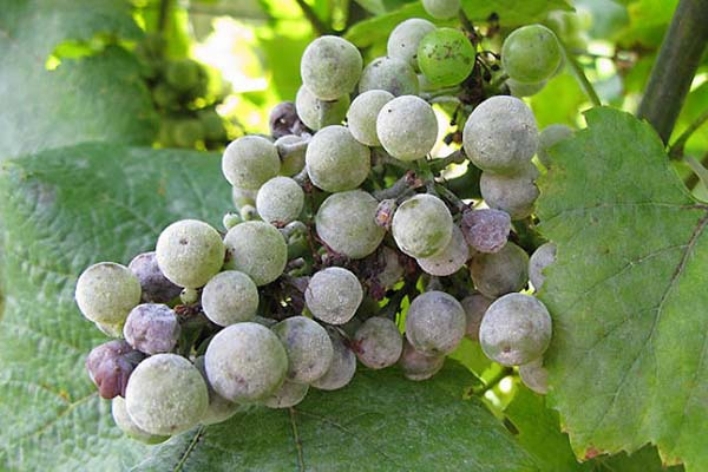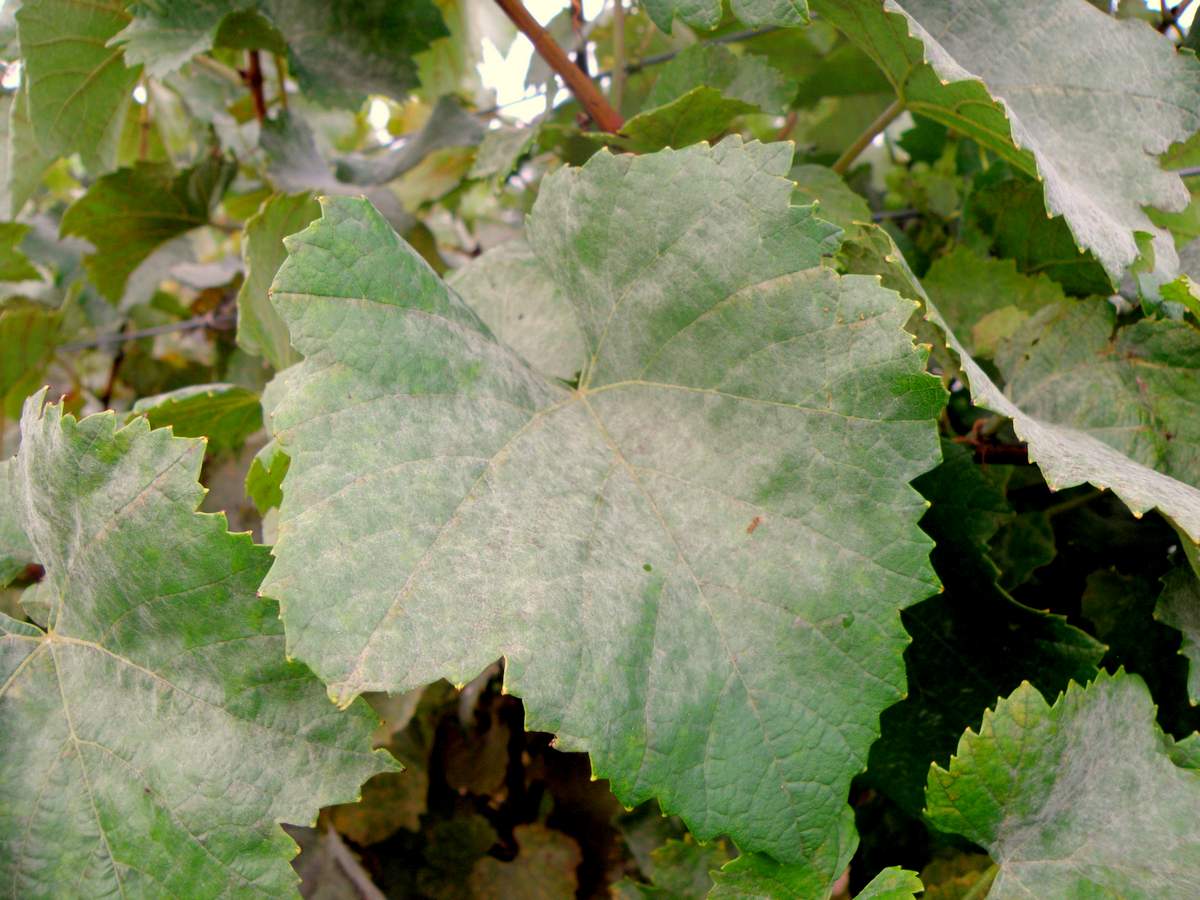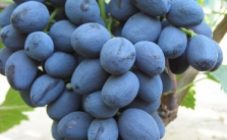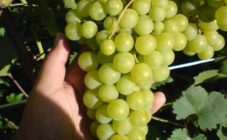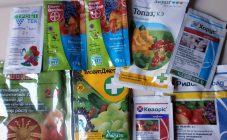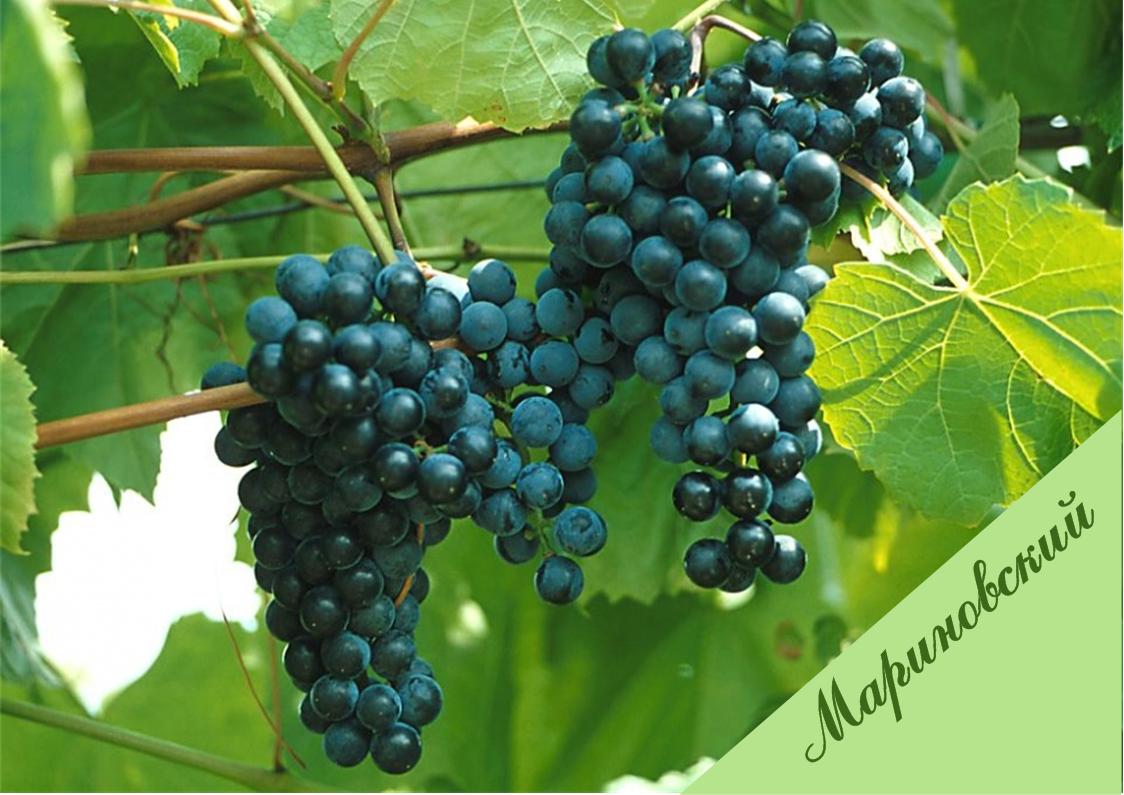Content:
Colossal damage is caused not only by downy mildew on grapes, but also by diseases such as powdery mildew. The disease was brought from distant North America to Foggy Albion in 1845 and soon spread throughout Europe and Asia. In the period from 1852 to 1854, huge damage was caused to the vineyards of France. It was only possible to deliver a powerful blow to the pathogenic microorganism when it was revealed by trial and error that it was afraid of sulfur.
Oidium on grapes: the main symptoms
Many growers bred their arms on the sides and wonder what to do when the grapes are covered with a white bloom. What to do, what disease should be treated?
Typical signs:
- White bloom on grape leaves. They become crumpled;
- The ovary stopped its formation and further development, a slippery bloom appeared.
Do not despair ahead of time, grapes can be saved if you make timely efforts and follow all the recommendations below.
Fighting oidium is not only possible, but also necessary. An important point is to strictly observe all preventive measures, because the disease is easier to prevent than to cure. If large areas of the crop are affected by powdery mildew, it may be too late to take any measures to preserve the crop. In such cases, it is advisable to collect all affected material and incinerate.
But at this stage of development, oidium is still quite difficult to diagnose. The first obvious symptoms can be observed as early as June. With severe damage, the plant begins to emit an unpleasant smell of rotten fish.
Powdery mildew and powdery mildew become more active with the onset of hot and sultry weather. Until 2009, this disease was detected in the vineyards of the southern part of Ukraine, but soon the disease reached Russia.
Causative agent
The causative agent of powdery mildew is the pathogenic fungus Uncinula necator. In the form of conidia, it winters on vines and fallen leaves. When a plant is damaged, shiny foci with pronounced small veins are usually formed on the leaves. On fruits, these foci are revealed more clearly, this is due to the fact that the fungus likes to eat berries. Brown spots are easy to spot on mature or still maturing vines.
With an impressive defeat by powdery mildew, the shoots are evenly covered with a bloom of brown color. With the onset of spring, during the active growth of young shoots, focal shoots can be found on infected bushes, they, in fact, are sources of infection from previous years.
It is advisable to start protecting bushes from oidium in early May, until the eyes open. To achieve maximum and lasting results, it is recommended to alternate systemic and contact drugs. Otherwise, oidium may develop addiction to the means used. Preventive measures are quite simple and accessible to everyone - in addition to regular and timely irrigation, compliance with all the rules for caring for the plant is of great importance. Oidium will rage where the plant is not cut, not spud, overgrown with weeds and it will be difficult to get rid of it.
Ways to combat powdery mildew
If oidium is found on grapes, how to process the culture to get rid of the disease? Treatment of oidium is not an easy task. An integrated approach is needed here.
The main task in viticulture when carrying out preventive measures and radical measures is to destroy the waking pathogenic fungus. Different methods of destruction are used. Their effectiveness increases significantly if the approach to treatment is complex.
- The most effective remedy for powdery mildew is finely ground sulfur. Recommended to use in the morning or evening. It is necessary to irrigate the bushes in personal protective equipment, this is necessary to prevent the development of undesirable consequences from the use of the chemical. To process the branches, vine, trunk, leaves and fruits should be so that the whole bush is covered with poison (spray from below, from above, from all sides). A missed (untreated) section of the bush is a threat to the revival of the fungus. It is imperative to irrigate the soil near and under the bush. The fungus dies as a result of absorption of sulfur, which, upon interaction, is synthesized into hydrogen sulfide.
- Colloidal sulfur is no less toxic substance for oidium. It is recommended to prepare effective sulfur baths for bunches. Many varieties of grapes are characterized by a tight fit of the berries to each other, which will not allow the chemical to penetrate between them. As a result, irrigation does not allow achieving the desired result, since the spores of the fungi remain simply intact.
- Preventive measures against oidium should be carried out as early as possible, soon after the end of winter. Normally, it is necessary to thin out the branches, remove damaged, dried out and non-fertile ones. All material and collected leaves must be burned.
- When warm, the vines should be opened so that they are well ventilated and dry. Soon after, copper-containing compounds are applied to the bushes. Consumption - at least 10 liters per bush.
- In late autumn, preparing the plant for the upcoming wintering, it must be carefully treated with a solution of iron or copper sulfate (the concentration of the active substance is 3-5%).
- When buying new seedlings, you need to carefully examine them; it is better to give preference not to markets, but to special nurseries or farms.
Folk methods of struggle
Effective, proven over the years, folk recipes for combating powdery mildew:
- An effective remedy for the disease is soda. To prepare the solution, you will need 3 tablespoons of soda powder, 1 tablespoon of liquid soap and 3-4 liters of water. All components are thoroughly mixed. Soon after preparation, the resulting composition must be irrigated with the bushes.
- Colloidal sulfur with a mixture of Bordeaux in a ratio of 1 to 1. The synthesis of these substances enhances their effect on the oidium fungus. It is imperative to stir before use, since the precipitation of sediment significantly reduces the efficiency of irrigation.
- Before the formation of buds, it will be necessary to treat the vines with a solution of copper sulfate prepared at the rate of 10 g of powder per 10 liters of water.
- Ash is safe for plants, but harmful to pests. 1 kg of sifted ash is poured with 10 liters of warm water. Insist the resulting composition for at least 5 days, be sure to stir. Before direct irrigation, add 30 g of grated laundry soap to the composition.
- It is worth noting the effectiveness of infusions from the poisonous tansy plant against powdery mildew. To prepare the broth, you need 300 g of fresh chopped grass and 10 liters of water. The components are mixed, the broth is infused for at least a day. Then simmer for 2 hours over low heat, allow to cool naturally. The final stage of preparation is to strain the solution. Undiluted composition irrigate not only the bushes, but also the soil near and under them.
Oidium, unfortunately, is already a fairly common disease in our country.If you do not identify the disease in a timely manner and do not take all measures to eliminate it, you can lose the entire crop and the bush too. Therefore, it is extremely important to comply with all preventive measures, as well as follow all the rules of agricultural cultivation. Oidium is easier to prevent than to cure!
